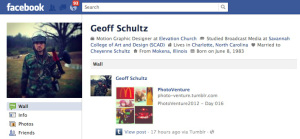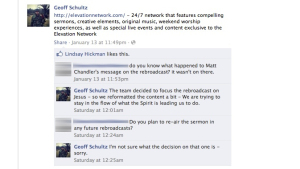Martin Luther nailed his 95 theses to the door of the Castle Church in Wittenberg, the public bulletin board of his day. In like manner, we, Athanasius and Chrysostom, post these 95 theses on the door of the internet. Like the original theses, these are debatable, for we believe that it is through vigorous debate that the spirits are tested and truth is revealed.
In publishing these theses, we do not intend to foment division, but to expose those who are creating division within the body of Christ. We are not addressing any particular church body or person, but invite all who love the Gospel of Jesus Christ to engage in this debate. We do so in the spirit of the great Reformer, Martin Luther, as we implore the mercies of God upon His Church, for the sake of Jesus Christ, the Lord of the Church and Bishop of our souls.
1. When our Lord and Master Jesus Christ said “Repent,” He willed that the whole life of believers should be one of repentance.
2. To “repent” means to be contrite for one’s sins and to trust Jesus Christ and solely in His completed work for one’s forgiveness, life, and salvation.
3. Those who describe the Christian life as purpose-driven deny true repentance, confuse the Law and the Gospel, and obscure the merits of Christ.
4. Impious and wicked are the methods of those who substitute self-help and pop-psychology for the Gospel in the name of relevance.
5. This impious disregard for the Gospel wickedly transforms sacred Scripture into a guidebook for living, a pharisaic sourcebook of principles, and sows tares among the wheat.
6. Relevance, self-help and pop-psychology have no power to work true contrition over sins and faith in Jesus Christ.
7. Like clouds without rain, purpose-driven preachers withhold the proclamation of the forgiveness of sins won by Christ on the cross and enslave men’s consciences to the law which they cleverly disguise as so-called 'Biblical Principles'.
8. By teaching tips for attaining perfect health, debt-free wealth, and better sex in marriage, the purveyors of relevance undermine true fear, love and trust in our Lord and Savior Jesus Christ.
9. They are enemies of Christ, who distort the Word of God by tearing verses from their original context in order to use them as proof texts for their self-help, pop-psychology agendas.
10. Injury is done the Word of God when it is used as a source book for practical, relevant “life applications.”
11. In the name of relevance, our Lord Jesus Christ is reduced to a life-coach whose “gospel” assists and motivates people to achieve the objectives of their self-centered delusions of grandeur.
12. Apart from the Holy Spirit, the seeker cannot understand the things of God for these are “spiritually discerned” (1 Cor 2:14).
13. The natural man does not naturally seek the Gospel. “I was found by those who did not seek me; I revealed myself to those who did not ask for me” (Is. 65:1)
14. The true Seeker of men’s souls is our Lord Jesus Christ who came to seek and to save the lost by His death on the cross (Luke 19:10).
15. The truly “seeker-sensitive” church proclaims God’s wrath against our sin and His mercy for Jesus’ sake.
16. The preaching of Christ crucified is a stumbling block to purpose-driven pragmatists and foolishness to church growth consultants.
17. The true gold of the Church is the Most Holy Gospel of the glory and the grace of God.
18. But this treasure is a stench in the nostrils of fallen and sinful men because it exposes man’s complete lack of ability to save himself by his own religious efforts.
19. On the other hand, the fool’s gold of self-help is preferred by sinful men, for it creates the illusion of moral progress and a life that is pleasing to God apart from repentance.
20. The gold of the Gospel is the net by which Christ would make us fishers of men.
21. The fool’s gold of self-help is a snare by which purpose-driven purveyors of relevance attempt to capture the riches and approval of men.
22. The church is holy sheep who hear the voice of their Shepherd.
23. How can sheep hear the voice of their Shepherd when false shepherds preach self-help and pop-psychology?
24. Purveyors of purpose-driven relevance are not shepherds of men’s souls but wolves in sheep’s clothing.
25. Purveyors of relevance claim that self-help, life-applications and biblical principles are the means to reach the unchurched because they meet people’s felt needs.
26. Yet a person’s greatest need is one he does not by nature feel, namely the need for the righteousness that comes from God through faith in Jesus Christ.
27. The true means by which fallen sinners are reached is the preaching of Christ and His sacraments. (Romans 10:17)
28. The true need that mankind is seeking but does not know is justification by grace through faith for Christ’s sake.
29. Since justification is through faith and not through works, natural man neither seeks it nor desires it.
30. Therefore, the teaching of justification by grace through faith is neither seeker-sensitive nor relevant to a world that naturally seeks self-justification.
31. To be in the church is to be union with Christ through faith.
32. Regardless of the number of people in attendance, the church does not grow unless men are granted repentance and faith by God through the action of His Word.
33. Scripture clearly teaches that the means by which God grants faith are the the hearing of the Word of Christ (the Gospel) and the water of Holy Baptism.
34.Therefore, even if a congregation, through their own marketing methods and business prowess were able to draw 100,000 people every Sunday, if the Gospel is not heard and the sacraments are not administered according to the Gospel there is no church and the true Church of Jesus Christ has not grown by a single soul.
35. If numerical growth is a measure of God’s approval, then we must conclude that God approves of Islam and the Mormons.
36. If financial success is a measure of God’s approval, then we must conclude that God approves of pornography and gambling.
37. Cancer and crabgrass both grow rapidly, as does the church that obscures the Gospel of Jesus Christ.
38. The purveying of purpose-driven relevance is the theology of glory; the preaching of Christ crucified for sinners is the theology of the cross.
39. The theologian of glory says that the kingdom of God is visible now in buildings, people, and dollars; the theologian of the cross says that the kingdom of God is an article of faith.
40. The theologian of glory asks “How much?” and “How many?”; the theologian of the cross preaches Christ regardless of how much or how many.
41. The theologian of glory prepares people to receive health, wealth, and happiness; the theologian of the cross prepares people to suffer and die in faith.
42. The theologian of glory preaches that God wants to grant you favors; the theologian of the cross preaches the favor of God for the sake of Christ crucified.
43. The theologian of glory proclaims 40 days of purpose; the theologian of the cross preaches daily dying and rising in Jesus.
44. God established the Church to be a “mouth house” of forgiveness not a madhouse of activity.
45. Christ wills that His voice be heard in His Church and not the voice of man when He says, “He who hears you, hears me.” (Luke 10:16)
46. Purveyors of purpose-driven relevance obscure the voice of Christ and so draw the sheep away from the Good Shepherd.
47. Christ saves from sin and death not through the motivation of the sinner to do good, but through baptismal death and resurrection.
48. The mission of the church is not to transform the world but to disciple the nations by baptizing and teaching (Matt 28:19-20).
49. Anyone who preaches a vision and demands allegiance to it sets up a new papacy among the churches.
50. A synod or church body is a human institution that exists by the will and consent of its member congregations and pastors.
51. A synod or church body is not merely an affiliation of churches that agree on a common purpose.
52. A synod or church body is not the Church, properly speaking, but a fellowship of churches sharing a common confession of faith and practice.
53. Synods are not of the church’s essence (esse) but for her well being (bene esse).
54. Synodical leaders are not lords over the churches, but servants of the churches and stewards of their common possessions.
55. Synodical leaders are not called to promulgate visions but to execute the collective will of the synod’s churches.
56. The old papacy arrogated the Church’s treasury of merits; the new papacy arrogates the Church’s treasury.
57. The old papacy said, “As the coin in the coffer clings, so the soul from purgatory springs.”
58. The new papacy says, “As the coin in the church coffer clings, so another program out of debt springs.”
59. The old papacy counted plenary indulgences; the new papacy counts money and people.
60. The old papacy suppressed the Gospel through canon law; the new papacy suppresses the Gospel through constitutions and by-laws.
61. The old papacy was a friend of Caesar; the new papacy is a friend of Mammon.
62. The old papacy bound a man’s conscience for the sake his wallet; the new papacy binds a man’s wallet for the sake of his conscience.
63. The old papacy promulgated infallible dogma; the new papacy promulgates undebatable visions.
64. The old papacy claims to sit on the seat of Peter; the new papacy claims to sit on the mandate of the majority.
65. The old papacy reserved the right to judge doctrine and practice; the new papacy judges doctrine and practice by commissions and committees.
66. The old papacy issued “bulls;” the new papacy issues task force reports.
67. The old papacy had a college of cardinals; the new papacy has high-priced consultants.
68. Just as popes and councils have erred in the past, so synodical leaders and synodical conventions err in the present.
69. A synod that is concerned for the true unity of the Spirit in the bond of peace does not excuse unionism and syncretism.
70. Unity in doctrine and practice means discernible interchangeability in teaching, preaching, and practice.
71. Unity in doctrine and practice does not consist in signing confessional statements, but in word and deed.
72. Worship is doctrine put into practice.
73. As one worships, so one believes.
74. As one believes, so one worships.
75. Christian worship consists in God’s service to us through His giving and our receiving in faith the gifts of Christ’s Word, Body, and Blood, and our service to God by our prayer, praise, and thanksgiving.
76. Worship that is focused principles for Christian living obscures the Gospel of Jesus Christ and His gifts and is detrimental to faith and salvation.
77. While Christian liberty allows that worship forms need not be altogether the same in every time and place, unity in faith and practice requires that worship forms must not be altogether different in every time and place.
78. Worship forms serve as identifying banners in the confessional field of battle.
79. Peculiar and novel worship forms obscure the unity of the churches and extol the creativity of the worship leaders.
80. In matters neither commanded nor forbidden in the Word of God (adiaphora), the churches of God are free to change ceremonies according to circumstances, as may be most beneficial and edifying to the churches of God. (Epitome, Art X.4)
81. Such changes must avoid all frivolity and offenses, particularly with regard to those who are weak in faith (Epitome, Art X.5).
82. Where the Gospel is at stake, concessions in ceremony must not be made so as to suggest unity with those who deny the Gospel (Epitome, Art X.6)
83. Therefore, it is contrary to the doctrine of adiaphora to hide the substance of Lutheran doctrine behind a non-Lutheran style of worship.
84. To create and sustain saving faith, God established the office of the holy ministry in the church to preach the Gospel and administer the sacraments according to our Lord’s institution.
85. No one may publicly preach, teach, or administer the sacraments in the churches without his being called and ordained.
86. Those who introduce novelties into the church are the true agents of division.
87. The ordination of women is a novelty that has caused great division in the church.
88. The introduction of worship forms not held in common by the churches is a cause of division and a stumbling block.
89. The church belongs to no man but to Jesus Christ, the incarnate Son of God, and Lord of the church.
90. Woe to the false prophets who cry, “Unity, unity” when there is no unity.
91. Again, woe to those who say, “Peace, peace,” when there is no peace.
92. Again, woe to those who say, “Gospel, gospel,” when there is no Gospel.
93. Blessed are those who say, “Cross, cross,” when there is no cross.
94. Christians are to be exhorted that they be diligent in following Christ, their Head, through all suffering, death, and hell;
95. And thus be confident of entering into heaven through many trials and tribulations, rather than through the assurance of outward peace, unity, and happiness.




